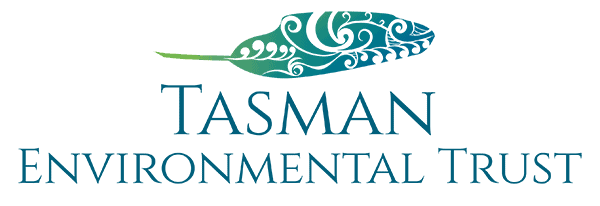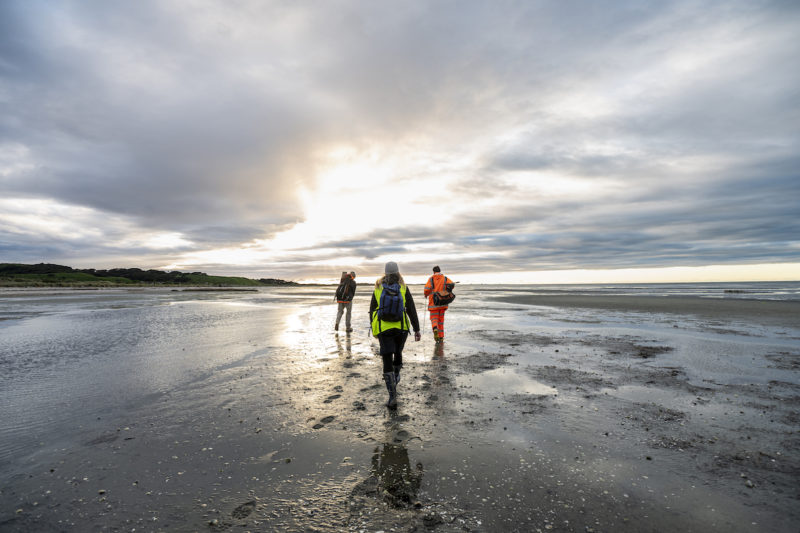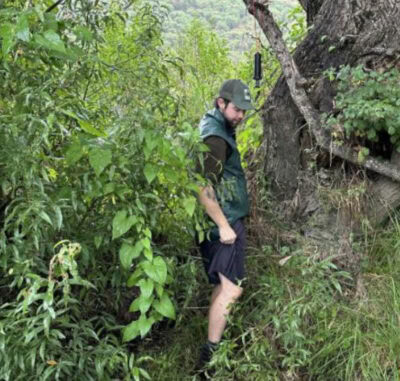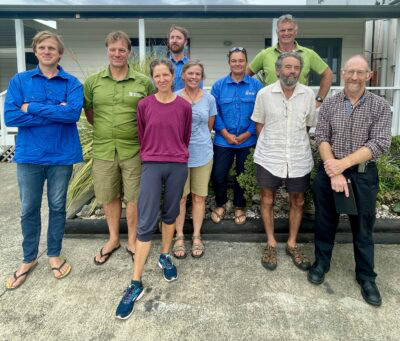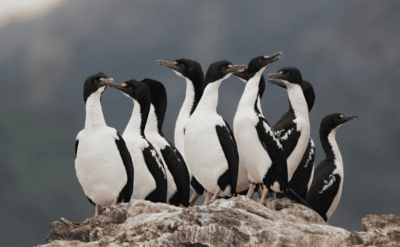TET’s Core & Restore Blue Carbon pilot project has been hailed as a “revolution”.
It’s been three years since TET and the Waimea Inlet Forum launched New Zealand’s first blue carbon workshop. Most people had never heard of blue carbon, the carbon stored in the plants and sediments of coastal and marine ecosystems. But by the end of that day, the 25 attendees representing local business, government, iwi and community conservation groups were enthusiastic about blue carbon’s potential to help mitigate the effects of climate change.
The Waimeha/Waimea Inlet is the second-largest tidal lagoon estuary in the South Island. Onetahua/Farewell Spit contains the largest area of seagrass in the country. As the workshop’s keynote speaker, Helen Kettles, Technical Advisor–Marine with the Department of Conservation, pointed out: we have a large blue carbon sink right on our doorstep.
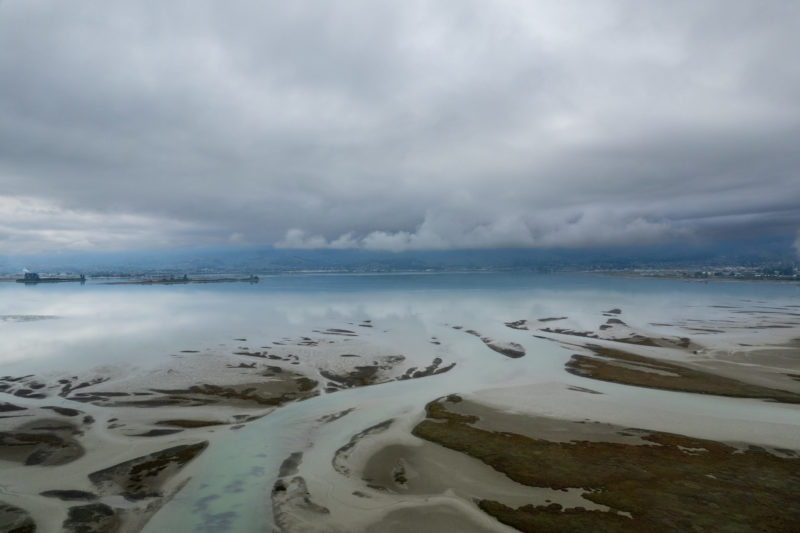
Coring commences
The initial vision was to take sediment samples from 200 sites across Te Tauihu (Top of the South) to measure their carbon content. When funding was not found for the extensive study, the project was scaled down into a pilot project focusing on the saltmarsh habitat of the Waimeha/Waimea Inlet, and Onetahua/Farewell Spit seagrass.
The project launched in November 2021, with core samples taken from the Waimeha/Waimea Estuary. More samples were taken at Onetahua the following May. All cores were sent to a NIWA lab in Hamilton for analysis, with Cawthron Institute then interpreting the findings.
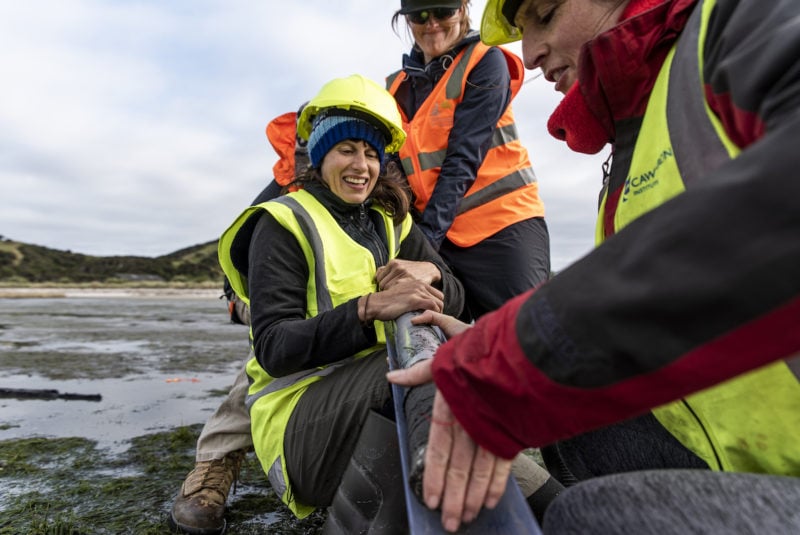
Significant results
Results from the pilot were shared with supporters and stakeholders at a hui in March 2023. There was good news, concerning news, and encouraging news:
- Our local coastal ecosystems are potentially valuable bue carbon systems. They are already storing carbon (around 10,000 tonnes in 250ha of saltmarsh and seagrass habitat at the Waimeha Inlet and 115,500 tonnes overall at Onetahua) and have high potential for further carbon capture and storage.
- But these habitats are in trouble—seagrass in particular.
- Estuaries can recover quickly, and there are already local initiatives underway to support this including TET’s Battle for the Banded Rail project.
Because Core & Restore was a pilot study carried out on a limited number of sites and, accounting for variability in different estuaries, the results are indicative only. However as a snapshot, this is the local story they’re telling:
- Saltmarsh (Waimeha Inlet) is storing more carbon than seagrass (Onetahua/Farewell Spit). One theory to account for this is that Onetahua is a more dynamic environment, with sandy sediments and higher marine influence.
- The amount of carbon stored varied at different depths. The deepest cores taken were 40cm at Waimeha/Waimea Inlet and 50cm at Onetahua/Farewell Spit. Saltmarsh habitat contained carbon stocks down throught the 40cm core. However, seagrass habitat stored more carbon at 10–20cm.
- Unvegetated estuarine areas are also valuable blue carbon sinks.
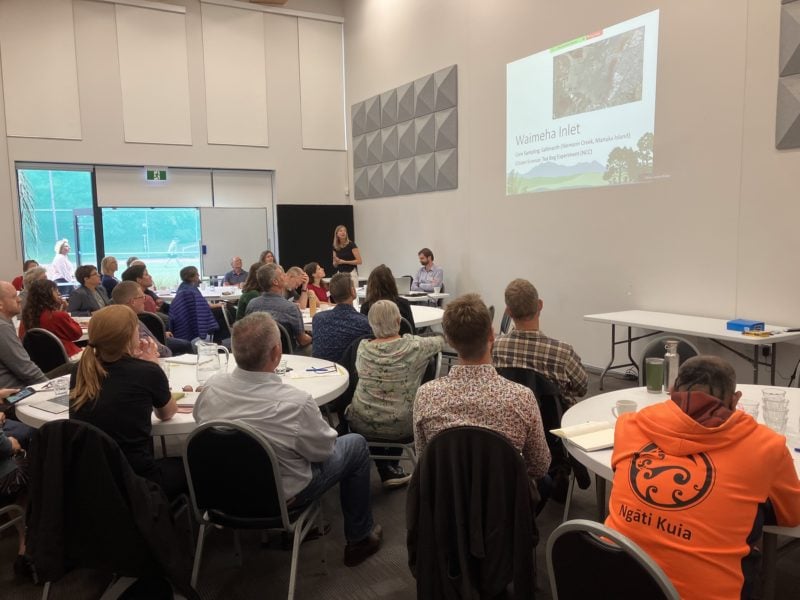
How do the numbers stack up nationally and internationally?
It’s hard to draw conclusions. There’s not much data nationally. Dr Richard Bulmer of marine ecology consultancy Tidal Research published this country’s only study in 2020 and is continuing research into the implications of blue carbon sequestration for national greenhouse gas budgets.
At the international level, we sit at the lower end of the scale. Waimeha is storing blue carbon at the rate of 38 tonnes/hectare. The high end of the international scale is 800 tonnes/hectare. However, this involves different plant species, climates and geomorphology, so it’s not exactly comparing apples with apples.
“The revolution to get blue carbon on the map.”
There was a recurring theme expressed at the Core & Restore Blue Carbon hui in March: the unstinting efforts of project lead Lauren Walker in keeping such a diverse range of partners, supporters and other stakeholderstogether and engaged. Businesses and non-profits, iwi and science organisations, NGOs and local government—all played their unique part in a pilot project that’s in everyone’s interests to learn about.
DOC’s Helen Kettles pointed out that Core & Restore was extraordinary for its holistic approach. “You are the only [one] to bring people together for protection, restoration, and community at place,” she said.
“The bi-cultural approach has international significance… You’ve been the revolution to get blue carbon on the map.”
Evidence for this was the project’s inclusion as a case study in Aotearoa New Zealand’s first Emissions Reduction Plan (Chapter 4, p. 87), she said. Work done through Core & Restore also provided valuable information for global environmental non-profit The Nature Conservancy in its assessment of suitability for blue carbon credits under a voluntary carbon credit scheme.
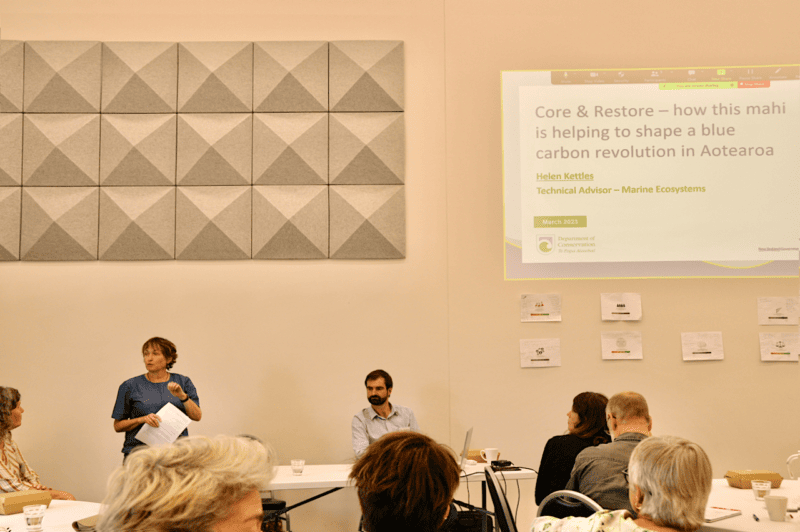
Where next?
Some project partners are carrying on their own work in the blue carbon space. The Cawthron Institute, for example, is involved in a three-year project to create a blueprint for seagrass restoration planting. With seagrass currently flowering in Aotearoa, Cawthron is processing its seed—the first undertaking of its kind in Aotearoa.
Tasman District Council has a number of coastal wetland restoration projects including saltmarsh planting and remediation at Best Island, excavating channels to re-wet the land at Borck Creek/Sandeman Reserve, and the Waimea Delta Wetland Enhancement with 3.5ha of wetland “created” since March 2022 as habitat for the endangered mātaku (Australasian bittern).
TET projects such as Battle for the Banded Rail are heavily involved in restoration planting in the Waimeha/Waimea Inlet and will continue to progress this mahi into the future.
The Core & Restore Blue Carbon pilot has been a trailblazer in Aotearoa New Zealand’s blue carbon space. There’s no question that it’s raised the profile of what DOC’s Helen Kettles calls “the secret weapon against climate change”, and brought it into the national conversation.
More on Core & Restore
Check out Lauren’s interviews on the Mission Zero website: https://missionzero.nz/?s=core+and+restore
